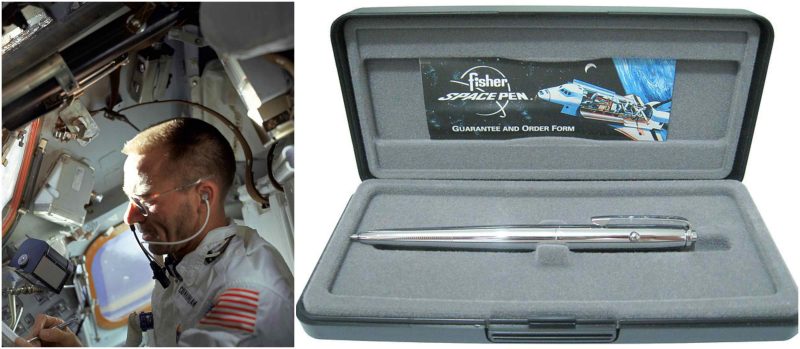In 1967, after rigorous testing, NASA selected the Fisher Space Pen for use on the Apollo Missions. They are now used on all manned space flights, both American and Russian. And it is also available for all the ordinary people who are not astronauts – they can at least write like one.
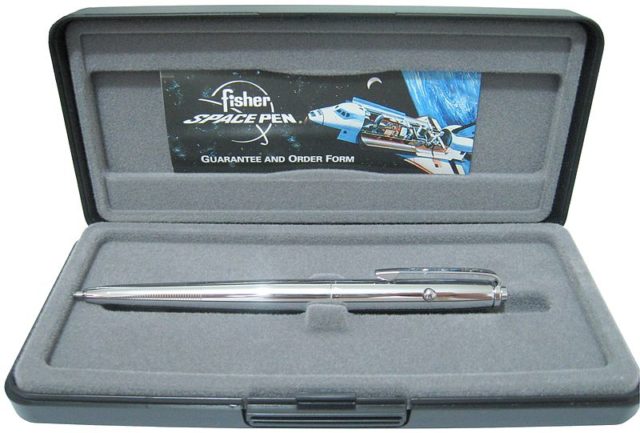
The Space Pen (also known as the Zero Gravity Pen), marketed by Fisher Space Pen Company, is a pen that uses pressurized ink cartridges and can write in zero gravity, underwater, over wet and greasy paper, at any angle, and in a very wide range of temperatures.
The Fisher Space Pen was invented by Austrian Friedrich Schächter, creator of the overall concept for a “Space Pen” (“Weltraumkugelschreiber”); the American industrialist and pen manufacturer Paul C. Fisher, who invented the “thixotropic special ink”; and the Austrian mechanic Erwin Rath. The pen is manufactured in Boulder City, Nevada, United States of America. Paul C. Fisher first patented the AG7 “anti-gravity” pen in 1965.
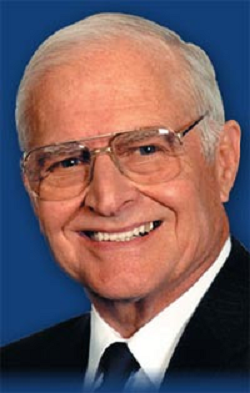
Fisher submitted his invention to NASA. After vigorous testing, NASA approved Fisher’s Space Pen. They purchased four hundred units at a reported price of $6.00. NASA purchased three different models: the 204, 207 and 208. The 204 had blue ink and a retraction button on the end. It was used on Skylab and the Apollo missions.
It was later replaced by the 207. The 207 model was similar to the 204, except the retraction button had been moved to the side. The 208 model was the same as the 207, except it wrote in black ink. NASA modified these pens for use in the space program. Velcro patches were added along with a standard metal clip to facilitate the storage and attachment of the pen.
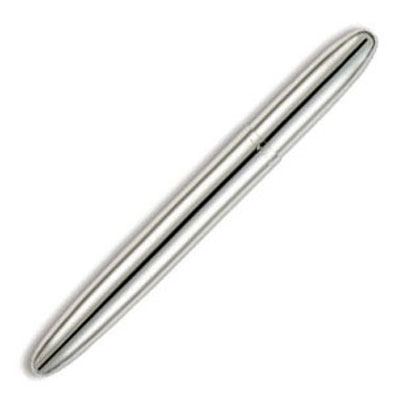
Pens claiming some or all of the same abilities have also appeared on the market from other manufacturers. There are two prominent styles of the pen: the AG7 “Astronaut Pen”, a long thin retractable pen shaped like a common ballpoint, and the “Bullet pen” which is non-retractable, shorter than standard ballpoints when capped, but full size when the cap is posted on the rear for writing. Several of the Fisher Space Pen models (the “Millennium” is one) are claimed to write for a lifetime of “average” use (it has an estimated shelf life of 100 years). However, the product literature states that the pen will write out the equivalent of exactly 30.7 miles of ink (approximately 49.4 kilometers).
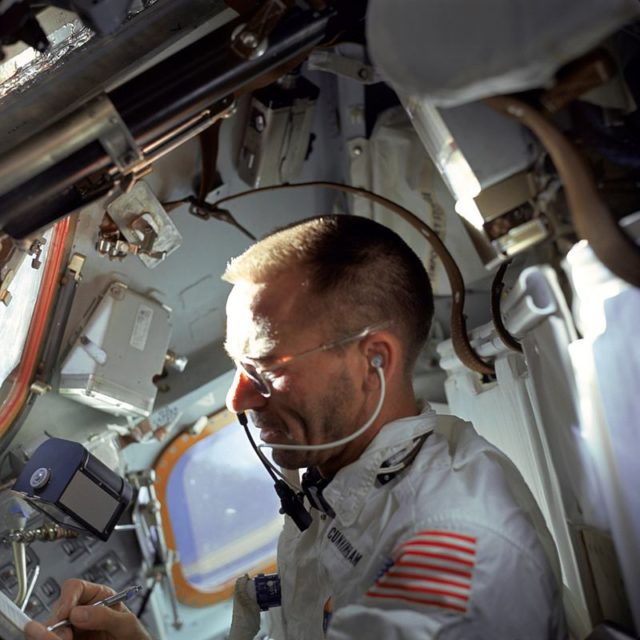
An urban legend states that NASA spent a significant amount of money to develop a pen that would write in space (the result purportedly being the Fisher Space Pen), while the Soviets just used pencils. There is a grain of truth: NASA began to develop a space pen, but when development costs skyrocketed the project was abandoned and astronauts went back to using pencils, along with the Soviets. However, the claim that NASA spent millions on the Space Pen is incorrect, as the Fisher pen was developed using private capital, not government funding. NASA – and the Soviets – eventually began purchasing such pens.
Fisher invented it independently and then, in 1965, asked NASA to try it. After extensive testing, NASA decided to use the pens in the future Apollo missions. Subsequently, in 1967 it was reported that NASA purchased approximately 400 pens for $6 a piece. In 2008, Gene Cernan’s Apollo 17-flown space pen sold in a Heritage auction for US$23,900.
